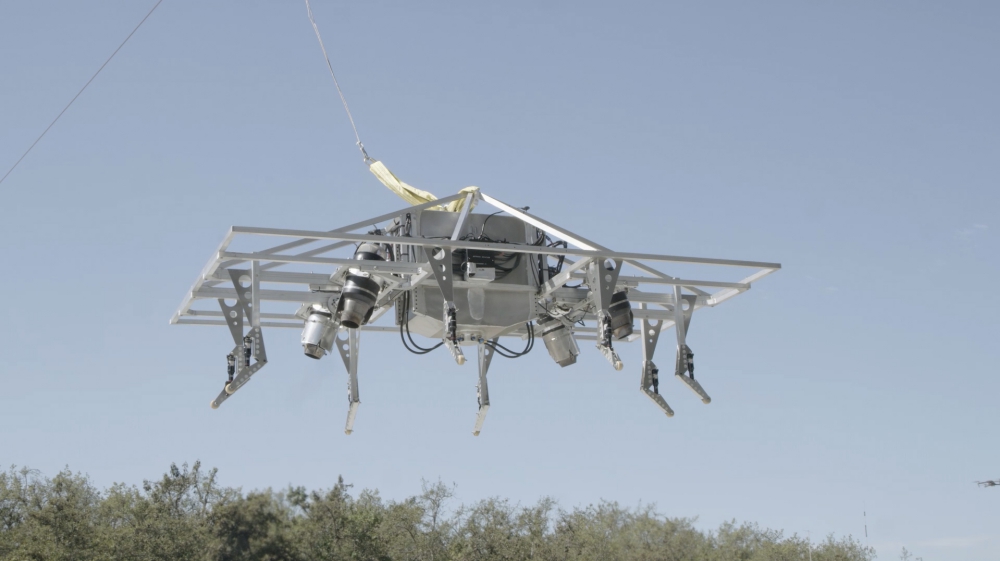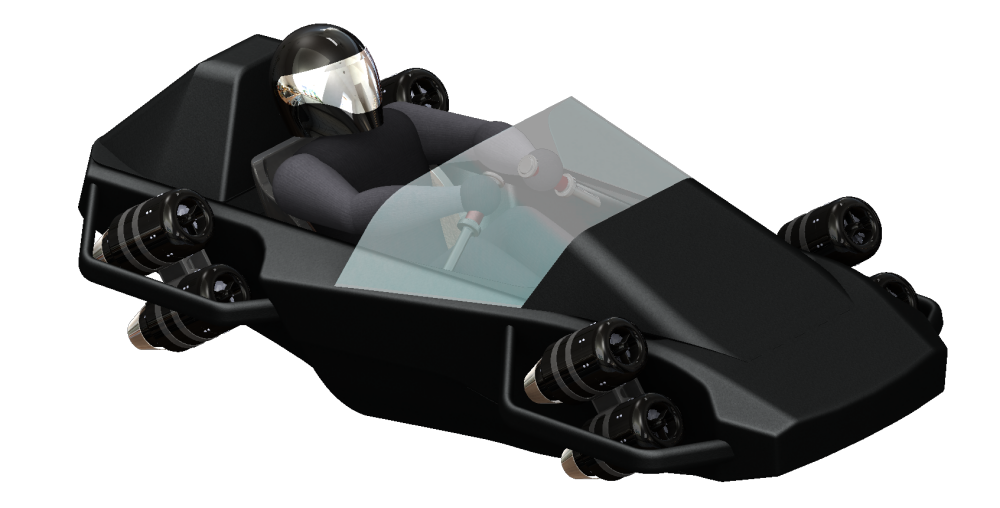California-based JetPack Aviation announced that it has completed flight testing with the first prototype – P1 – of its Speeder jet powered, VTOL mobility platform. Trials concluded successfully in May. Flight testing began in December 2020, with two-axis tethers securing the platform, progressing through a single-axis tether and culminating in the aircraft flying with just a safety tether connection.
The program achieved a series of test points aimed at proving the engine gimbal and articulated exhaust nozzle systems, as well as the flight controller.
The engine gimbal and articulated exhaust nozzle systems, combined with the mechanical elements of the Speeder control system, operate in conjunction with the flight controller, comprising a computer and flight sensors, to enable the aircraft’s unique maneuverability. Within the confines of the 80ft (24m) tether system, P1 demonstrated the Speeder’s ability to take-off, climb, hover, yaw and perform slow transitions into forward flight.
With its unique combination of heavy payload, speed, VTOL operation, simplicity and optionally crewed flight, the Speeder offers unprecedented special missions capability, with longer term application to the urban air mobility market. Demand is expected to be high, and JetPack Aviation has already begun readying letters of intent for customers and taking pre-orders for the aircraft.
Build work on P1.5, the next prototype, which will ultimately fly off-tether, has already begun. Flight testing is expected to begin later in summer 2021, gathering data that will inform the design and build of P2, for which flight testing is anticipated from Q1/2 2022. P1.5 employs a smaller airframe compared to P1, as JetPack Aviation moves the product closer to production configuration. Like P1, it will use four engines, although the production model will employ eight, at least for crewed operations; P1.5 will also feature carbon fiber body panels. Trials will validate increasingly rapid transitions as well as faster forward, rearward, and lateral flight.
The P2 prototype Speeder will have a fully formed body, small, field-removable wings, and forward canards. The aircraft is sufficiently compact to be transported in a car or motorcycle trailer, and immediately ready to fly, with no charging or other requirements. It is expected to demonstrate high-speed forward flight with control and lift effected by aerodynamic surfaces as required, building on the aircraft’s proven capability to fly safely on engine thrust vectoring.
The Speeder burns regular Jet A-1, kerosene, or diesel, but in a recent cooperative supply agreement with Prometheus Fuels Inc., JetPack Aviation has committed to using 100% zero net carbon fuel in all its future operations.
Source: Press Release


